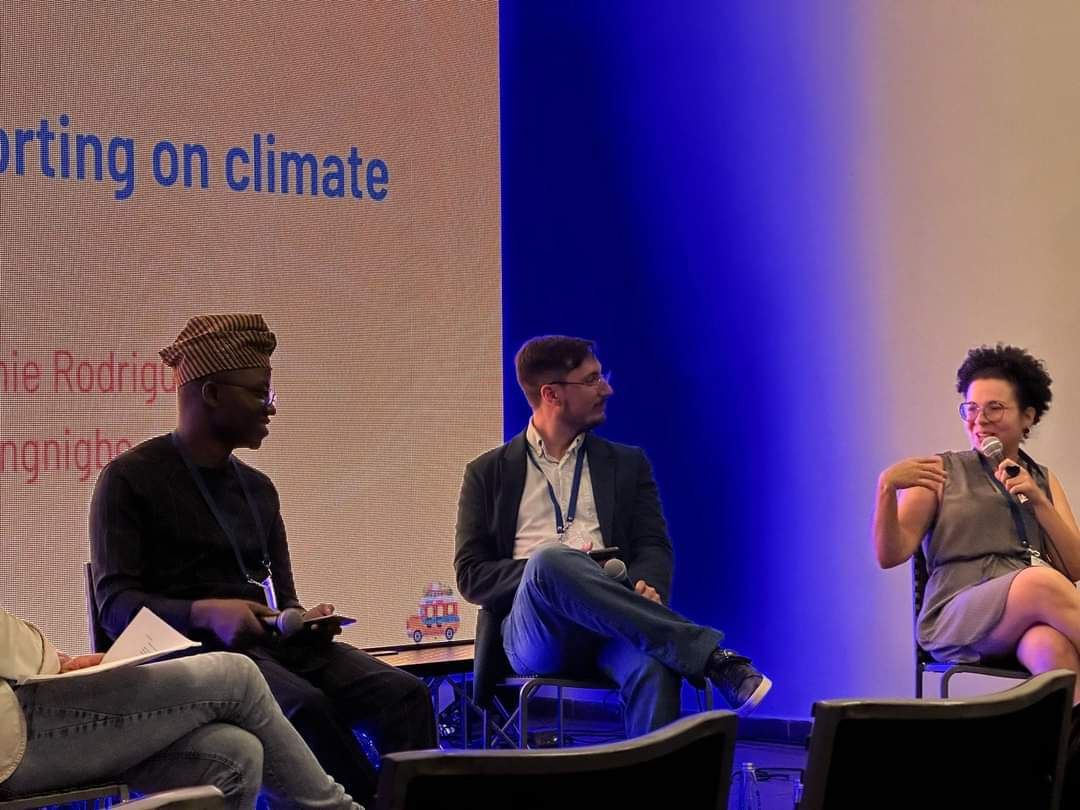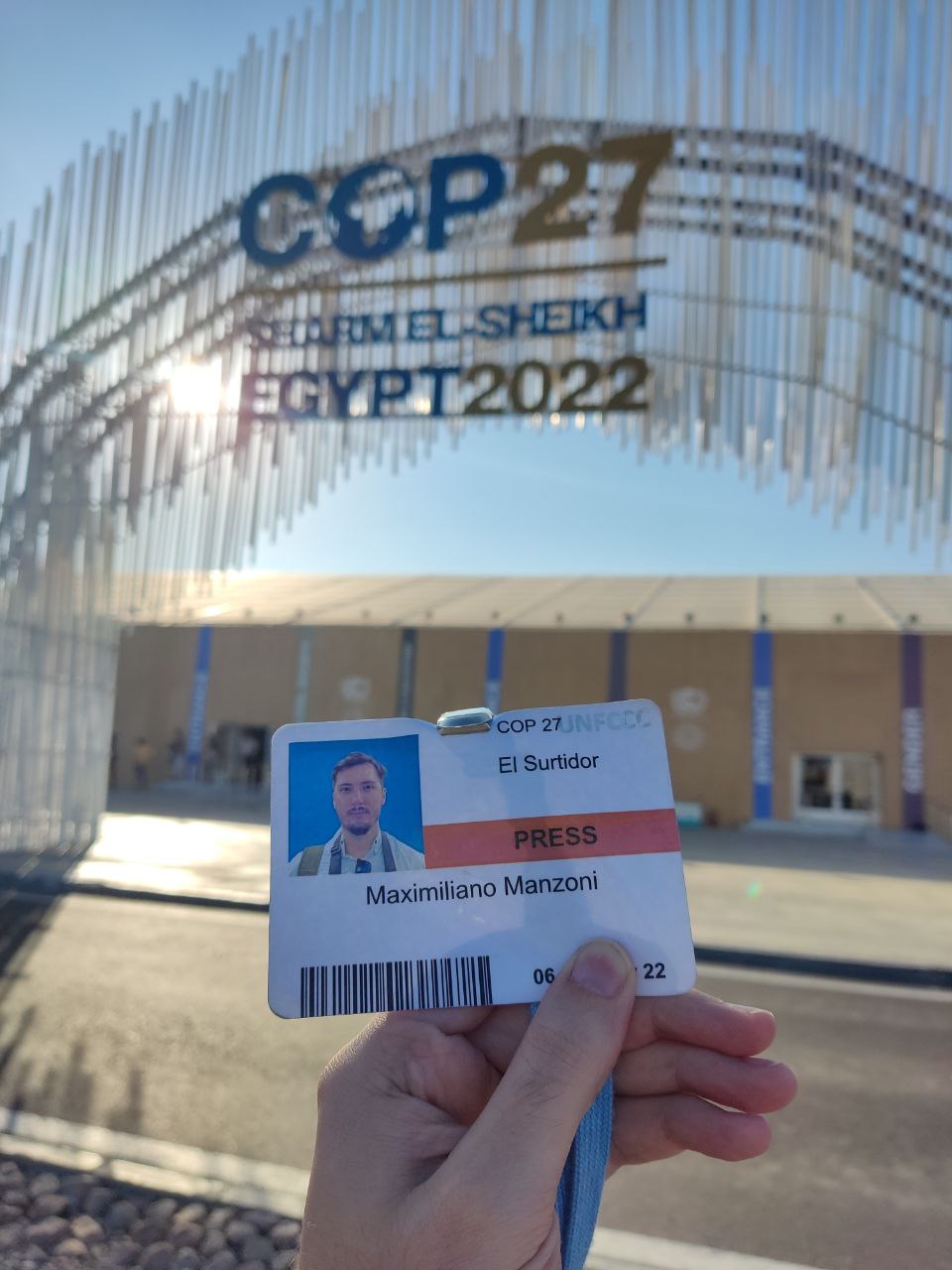Climate journalist Maximiliano Manzoni wants his fellow reporters to start incorporating an environmental focus into their news coverage, no matter their beat. Climate reporting is often low on the list of priorities for newsrooms, he said, but it’s more all-encompassing than many believe.
Manzoni got his start writing when he was a teenager. He blogged about “all things politics,” he recalled, covering elections, lobbyists’ influence and more in Paraguay. He would go on to use his platform to spread awareness about education in the country, focusing in particular on how far-right actors impacted the public school systems with book bans and censorship.
Later, environmental issues piqued Manzoni’s interest: alongside his blogging, he began to freelance as a climate reporter.
Manzoni also worked as a courier for a law and notary firm at the time. He was tasked with delivering legal documents, such as property titles, municipal licenses and police filings, to public institutions. In doing so, he learned how to read legal documents, and where to look for and how to obtain them. This experience has inspired him to take on reporting assignments more investigative in nature.
Today, Manzoni works with the Paraguayan independent media outlet El Surti on the climate beat, a job he has held for six years now. Just this month, Manzoni was involved in an investigation into Europe’s financing of eucalyptus plantations in Paraguay that use harmful agrochemicals. Last September, he was one of the contributing reporters in a piece on the proliferation of gas stations in the capital city of Asunción.
He hopes his reporting on the climate will raise critical awareness about environmental issues and their consequences.
I spoke with Manzoni about his experience as a climate journalist, the role of journalism in combating climate change, and his advice for future generations of climate journalists.
Should more journalists focus on the climate in their reporting today?
I'm trying to push this idea that, just like gender or human rights, climate should be a framework to work through your reporting on everyday issues. Climate is not a topic – it is something that is transversal to everything we are actually discussing right now.
We are discussing taxes, we are discussing climate. We are discussing development, we are discussing climate.
We need more investigative journalists on climate because there's so much more in fossil fuels and greenwashing that it is a goldmine for investigative journalists. We need more journalists that engage with climate as a collaborative effort between different newsrooms and different kinds of journalists.

You covered COP27 in Sharm el Sheikh, Egypt last year as a Climate Tracker Fellow. What was this experience like?
Maybe it's contradictory, but being there so far away from Paraguay and doing these exercises of trying to connect what was being discussed in Egypt with what was happening in Paraguay enriched my reporting. It gave me the tools to actually connect what the IPCC [Intergovernmental Panel on Climate Change] said with the local climate problems.
Trying to do this two-way street in my reporting was also very helpful to try and educate people about how the climate negotiations work.

How has IJNet helped your career?
IJNet was key when I got the fellowship to cover the COP27 last November in Egypt. Working with IJNet was key to break through barriers that climate journalists have to face. We have bouts of not having any climate-related stories, so climate journalists are left in a little corner of the newsroom.
I’m trying to break the ceiling and push this idea that we need less specialized climate journalists and more journalists with climate as a framework to report on the everyday stuff like transport, housing, international politics, economy, even fashion and sports. Working with IJNet helped me to engage with more traditional journalists in trying to establish the idea that climate is also helpful for your everyday reporting. [It helped me] share with more people the actual reporting I was doing at COP27 because I was the first Paraguayan journalist doing reporting there.
In Egypt, I was really struggling the first week trying to report on a public official that didn't want to talk with me about issues they don't want me to report on because they knew that my reporting will be critical of them. The work with IJNet gave me enough recognition to not be ignored by those officials.
Do you have any advice for future generations of climate journalists?
First of all, when you want to pitch a climate story to a traditional editor, don’t say to him or her that it is a climate story. Tell them after it is a success, because climate stories are a success: we have a whole lot of audience willing to engage in these stories if they don't have the [climate] label. The label sometimes repels people.
I think that it's important to understand that climate change is not only the physical part, but also the politics around it. Try to cover what gets you excited because climate change is a big topic. You can talk about climate change and health, climate change and security, or climate change and immigration.
Don't hesitate to try new stuff. There are a lot of climate journalists that are doing the same old tropes. You know, the polar bear in the Arctic melting, or using palettes of colors like red, orange and yellow when we talk about forest fires. There's so much more to talk about, don't hesitate to try to give it a spin.
Main photo courtesy of Maximiliano Manzoni.


